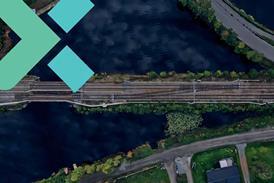Close menu
- Home
-
News
- Back to parent navigation item
- News
- Traction and rolling stock
- Passenger
- High speed
- Freight
- Infrastructure
- Policy
- Technology
- Ticketing
- Business
- Research, training and skills
- Accessibility and inclusion
- People
- Urban rail news
- Suburban and commuter rail
- Metro
- Light rail and tram
- Monorail and peoplemover
- Regions
- InnoTrans
- In depth
- Events
- Data
- Maps
- Tenders & Jobs
- Sponsored content
- Insights
Study proposes massive expansion of Europe’s high speed rail network
By Railway Gazette International2023-01-23T17:15:00

EUROPE: A master plan for massive expansion of the high speed rail network has been proposed by the Europe’s Rail Joint Undertaking in co-operation with the Community of European Railways, supply industry association UNIFE and the AllRail association of new entrants to the passenger market.
Already have an account? LOG IN
To continue…
You’ve reached your limit of content for the month














